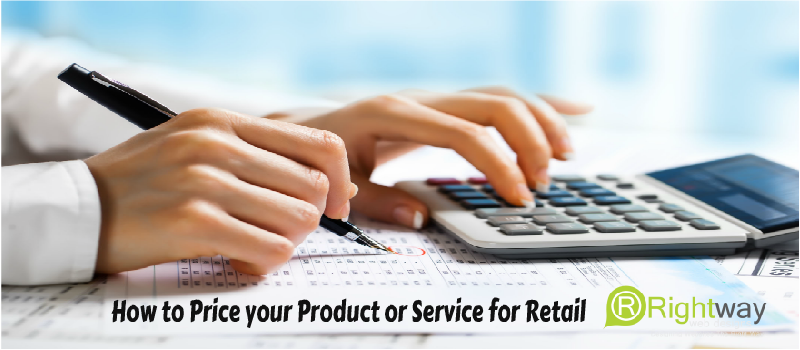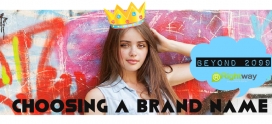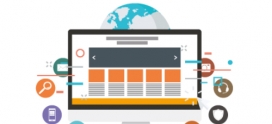
How to Price your Product or Service for Retail
We open the discussion of what to expect and how to price your product or service when selling your product through various sales channels.
Determine your Cost Of Goods (COG)
This is of course elementary, but you’d be surprised how often we encounter clients who don’t have a detailed grasp on their cost of goods. Everything will start from here, so you need to know exactly how much your basic unit of sale costs. What’s a unit of sale? Well let’s use the traditional business school widget for our example. If you sell widgets individually, then one widget is your unit of sale. However, if you only sell them in boxes of five, then the box is your unit of sale. If you sell them both individually and in a box – then you have two types of selling units. And you need to determine the cost of goods on each.
How do you determine the cost of goods? What’s included?
Well, anything that goes into the final unit of sale should be included. Then we’ll add a little bit for variable costs (to average things out). So for our widget, let’s assume the raw materials cost 60¢, processing the raw materials costs 10¢, and fabricating the product (either by production line or by hand) costs 30¢. So far our COGs is $1.00. But we’re not done yet. This is only the total cost for our manufacturing process – going from raw material to finished product.
Raw + Processing + Fabrication = Manufactured Cost ($1.00)
Normally, your finished product will need packaging. To determine your packaging costs, include the cost of any unfinished materials (tubes, bottles, packing peanuts, etc.) and the cost of finishing – printing on the box, a label, silk screening on the tube, etc. So if our widget goes in a jar, and the jar costs 30¢ and the label for the jar, after printing, costs 20¢ (average for each label if we order 1000 labels). We also need to include application of the label. This may be automated or by hand, but it still needs a cost associated with it. Let’s assume we’re applying the label by hand, to 1000 jars, and after labeling we stick our widget in the jar, and seal the jar. This process takes about 60 seconds for the average worker. The warehouse workers are paid $10.00 per hour – so the cost for label application is approximately 17¢ – we’ll round it up to 20¢ since there will be variability in the process.
Now, our jarred widget is supposed to look premium, so we put our jar in a box. Now, we need to add our box and box printing costs to our packaging cost. And we’ll need to add time for placing our jar into a the box and sealing the box. Let’s assume the printed box is 20¢ and we’ll allot for 10¢ of time to place the jar in the box and seal the box.
Packaging Materials + Assembly + Manufactured Cost = Packaged Cost ($2.00)
Now let's get to shipping & pack-out
We may have a finished selling unit; our boxed, jarred, widget. But we’re not done with COGs. We need to amortize additional costs into the cost of our product. So far, we’ve only essentially dealt with hard costs. But we need to include some soft costs. These are items which are required to deliver our product to market. Since we’re selling to retailers, distributors, and direct to consumers – we’ll need to account for shipping and external packaging to all three sales channels.
When selling to retailers and distributors, we’ll need to accommodate shipping to their locations. And since they can’t simply buy one at a time, we’ll have to price out external packaging and any pack-out materials. Assume we ship a minimum of 12 widgets to retailers and distributors. We’ll need to purchase a corrugated box that holds our 12 individually boxed widgets for safekeeping during transit. We’re lucky, and we find a U-Line box that fits our 12 widgets almost perfectly. It costs $2.00 per box. But we also need to add in 40¢ for packing materials (foam peanuts, packing tape) and 10¢ for the exterior label and 50¢ for filling our ship box with 12 widget boxes and sealing it up. So a final ship-ready retailer or distributor box will cost $3.00 and hold 12 units. The pack-out cost per selling unit (boxed widget) is 25¢. Now to ship our box of twelve widgets, we’ll get the best carrier rates and average this out too. Of course, this will be variable, since the distance we’re shipping and the total number of boxes, etc. affect our shipping costs. So here we have to do our best. Let’s assume, typically, it’ll cost $20 to ship our box of 12 – that’s about $1.66 per selling unit, but we’ll average up to $1.75 to allow for some wiggle room (and to make my math easier).
Shipping + Pack-out + Packaged Cost = Delivered Cost ($4.00)
Well, that should be it – right? We’ve determined our cost of goods?
Unfortunately, not quite. We also have to allow for some miscellaneous costs and variable costs. For instance, we haven’t allowed for overhead, shipping of goods during manufacture, graphic design (somebody was paid to design our boxes and labels), research and development, and marketing. Now a Wharton Business School graduate would probably have a nifty formula for figuring this all out down to the penny. But here’s where we simply apply 30% and call it a day. Since these costs all fluctuate, we’ve found it easier to simply assign a percentage to cover it. If you feel you really need a fancy formula, go talk to your nearest MBA.
Delivered Cost x 30% = COG ($5.20)
Finally, we have our Cost Of Goods, now what?
Finally, we have our Cost Of Goods, now what?
Well, now we have our COGs and it’s inclusive of hard, soft, and variable costs, so we can evaluate our market and our sales channels and determine if our product is viable. Obviously, we can always sell direct to the consumer. The rule of thumb is you’ll deliver the product at 2x or 4x COGs. So we could sell our product directly to the end user for between $10.40 and $20.80. We’d have to adjust our direct price to reflect market conditions – and if we scan the competition, we find the average boxed widget sells direct for $25.00. This is great; we can sell at this price or lower and still we’re selling at nearly 5x costs. In this case, $19.80 is a terrific margin for direct sales. We could sell it direct for $15.00, undercut everyone, and we’ll be on easy street!
However, selling direct isn’t always the best scenario. Sure, it always offers the best margins, but it entails a lot of additional marketing and sales-related costs. The burden of building awareness, creating desire, and supporting the sale falls entirely on you. And unless you’re well funded, it can be difficult to scale an operation on direct sales only. So normally, you’ll be looking to other sales channels and accept lower margins in exchange for less burden and more regular orders and cash flow (hopefully).
Determining a Manufacturer Suggested Retail Price (MSRP)
As soon as you expand your sales beyond selling direct, you’ll need to establish an MSRP. This is the suggested price you want everyone to sell your boxed widget for in their stores or online. And this is where things start to get tricky. You need to establish an MSRP that is competitive and that allows for profit across all sales channels. You’ll might need to reconfigure your initial price based on the margin (or points) you’re doling out to your new channel partners.
Distributor Discounting
First, we’ll look at distributors. Why? Well they’ll usually command the largest discount percentage simply because you won’t need to support them much beyond your initial sale to them (and then their reorders). Now this is an oversimplification of this partnership; in reality you’ll need to work with your distributors regularly to keep them excited about your products and inform them of new products and/or specials. But for this example, we’ll focus on the expected discount rates.
Be prepared to take 60% to 70% (and maybe more) off your price when selling to distributors. Remember, a distributor will be reselling to a retailer who will then have to sell it to consumers. So there must be margin available for all, throughout the process, or it won’t work (or sell). Let’s examine our above example – where we intended to undercut the market and sell the boxed widget direct for $15.00. Will this work now for distributors?
$15.00 x .3 (70% discount) = $4.50 – margin (- 70¢)
Well that’s not good. The distributor will want to buy it for $4.50 and our COG is $5.20. We’ll be out of business really soon if we do this deal. So one of two things must happen. One, we have to reduce our costs – which is possible by increasing volumes or efficiencies, or reducing quality or the size of our product. Or two, we can raise our MSRP. In the first scenario, we’d be betting the farm if we did the deal without a guarantee of volume or an influx of capital, so the simplest course of action is to raise our MSRP. If we sell at the average market price…it seems we can do distribution and make a little bit of money.
$25.00 x .3 (70% discount) = $7.50 – margin $2.30
$25.00 x .4 (60% discount) = $10.00 – margin $4.80
That’s not a great margin. In fact, it rather sucks. But at least we’ll stay in business. And hopefully, with wider distribution, our volume will increase and we can negotiate lower costs on our manufactured, packaged, and delivered costs. And we’ll make money while we do this. It’s not a great deal, but at least we can do it and we don’t need to start at 70% discount. We’d need to try to negotiate a 60% discount for distributors ($25 x .4 = $10). At $10, things would be much more comfortable and allow for any market or cost volatility. And we could reserve offering 70% discounts for distributors who order large volume. Or course, negotiating with and managing distributors is another discussion.
Retail Discounting
Well, we took it on the nose with distributors, but it’s doable at $25.00 MSRP. So how will Retailers fare? Well, since more retailers will expect a 40% to 60% discount, you’ll be fine. Since we know things work at 60% off, less of a discount will only make things better. So retail will offer better margins. However, retailers will also expect additional allowances (as will some distributors) but we’ll discuss this next, under hidden costs.
$25.00 x .6 (40% discount) = $15.00 – margin $9.80
Retailers will want more support. They’ll want marketing dollars or allowances (usually a portion of free products or percentage off an order). After all, this will allow them to market your product as available for sale (promoting your brand). This marketing allowance can vary, but it should be accounted for as we’ll describe below. Further, returns, damaged products, and sampling options will all be frequent requests. Be ready for them.
Beware of hidden costs?
There are a lot of pitfalls and traps that will appear when dealing with various sales channels. First, damaged or lost shipments. This can be frustrating and expensive if not dealt with effectively. Sales partners can become irritated and you’ll be forced to reship additional products, driving up your costs and lowering margins. To prevent loss or damage, make sure your outbound shipping packaging is up to the task. You may need more interior packaging to safeguard interior items. And put into place cross-checking of outbound orders. This will insure that the correct items are sent and that the total number of shipped items is tallied at least twice. Knowing there are four boxes will help when determining fault – if your carrier only delivered three, your freight carrier is at fault. You can insure shipments – though this is usually cost-prohibitive and unnecessary in most circumstances, as the default insurance rates will usually cover you.
Retailers (and distributors) will want samples.
Sampling is a good way for retailers to promote your product. But they don’t want to take it out of their inventory. So often they’ll negotiate a percentage per order that’s dedicated to sampling (that’s free to them). In some situations you can offer samplettes or smaller versions of the product for sampling, and in others, sampling just isn’t possible. But you should anticipate the request and be prepared for it.
How do distributors and retailers deal with returned products?
This can be another tricky situation. You want to verify the return occurred and you want to figure out why, but shipping product back through the channels can be impossible or costly. So you have to watch out that returns don’t become an issue, and jump on it if they start to rise. You may have a bad batch or manufacturing defect – which is a hint to code your products with batch numbers and expiration dates (if applicable).
Guaranteed sales?
. Guaranteed sales is never a good policy. It’s when a distributor will only take on your product line if you guarantee to take the product back and return the money if it doesn’t sell. Think of it like consignment, but worse, since you’re unlikely to hold the payment in escrow. So if they do return the product, you’ll have to come up with the money to return to them.
Managing Promotions?
Don’t forget that from time to time you’ll also want to offer promotions to your various sales channels. It may be to clear out inventory to prepare for a new product update or it may be cyclical (i.e., Christmas season). So you’ll need to insure there’s margin available to offer discounts or buy one get one offers. And don’t forget that any offer you might make to your customers (if you’re selling direct) will be found and desired by your sales partners. So be careful to craft any direct-to-consumer offers (e.g., on your website) so they also work throughout your sales channels. Or you’ll get angry emails and phone calls from your buyers demanding equal treatment. Or worse, they’ll simply stop ordering from you.
How to handle these hidden issues?
Typically, one solution is to offer an additional 2-3% discount to cover most of the aforementioned issues. If returns or freight issues or sampling grows beyond that – you’ll need to address it immediately on an individual channel partner basis. But of course, if you take this approach, you’ll need to be aware how if affects your margins
We would love to hear your comments below and feedback on how you came to price your product or service for retail.



